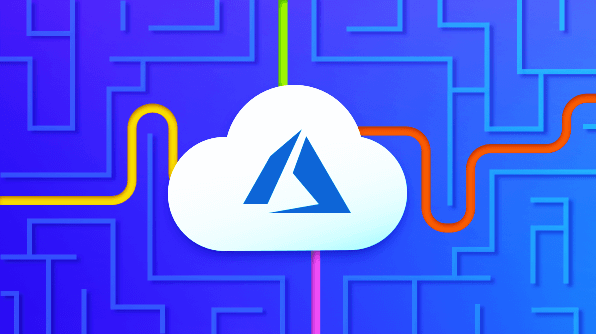Azure Pipelines is a cloud service used to construct and test your code project automatically. It makes changes automatically available to users. Azure Pipelines merges continuous integration (CI) and continuous delivery (CD) to constantly and persistently test and construct your code and publish it to any target (Hosting Server).
You can also build a custom pipeline to implement CI and CD. But using Azure Pipelines has the following advantages:
- Works with any language or platform.
- Deploys to different types of targets at the same time.
- Combines with Azure deployments.
- Builds on Windows, Linux, or Mac machines.
- Combines with GitHub.
- Works with open-source projects.
Steps to configure CI/CD pipeline
Azure Portal (https://portal.azure.com/)
- Sign in into the Azure Portal (https://portal.azure.com/).
- Select Deployment Center under the Deployment menu of Publish App Service.
- Select Azure Repos as the Source Control.

- Select Azure Pipelines as the pipeline.
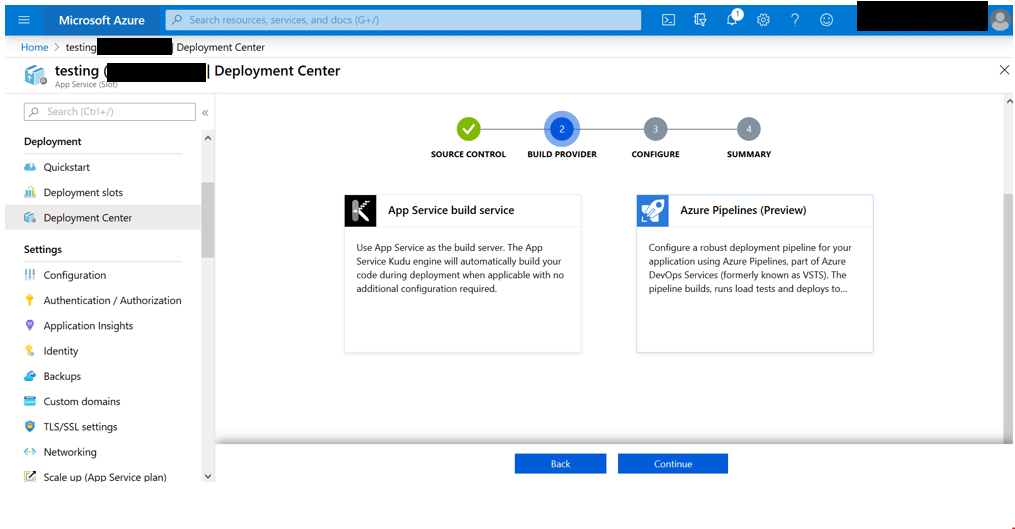
- Choose the project, repository, and branch.
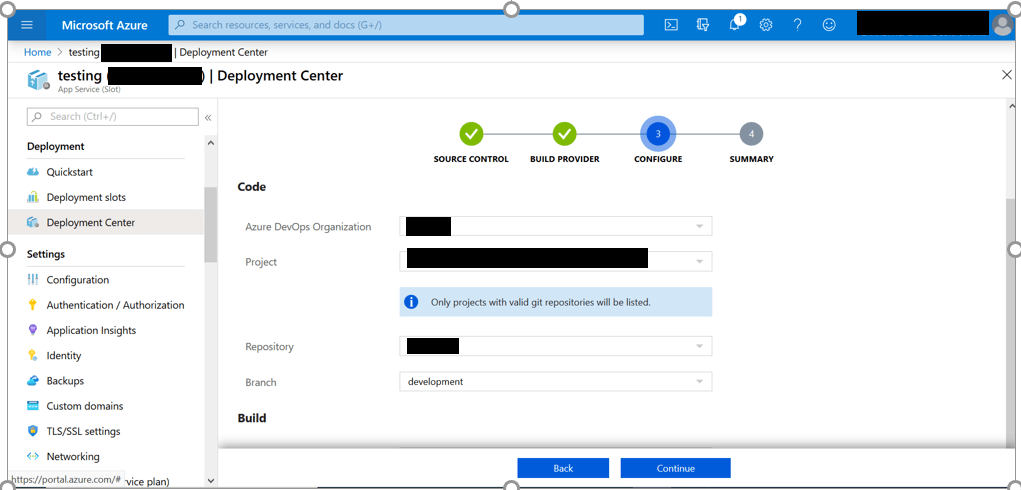
- Click Finish to complete the CI/CD configuration.
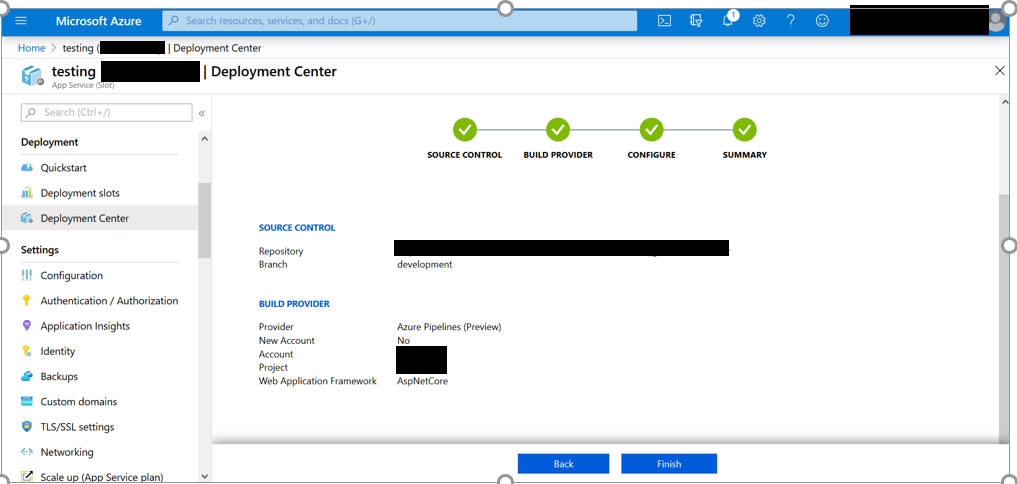
Azure Repos (https://dev.azure.com/)
After completing the CI/CD pipeline configuration, follow these steps to manage the changes made in your code project:
- Sign in into https://dev.azure.com/.
- Update the test project name in Azure Pipelines.
- Commit the changes to the DevOps branch.
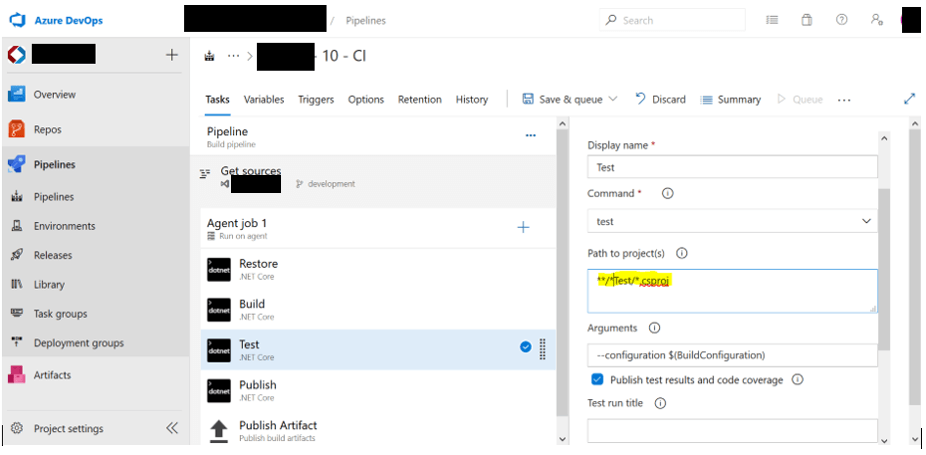
- The CI pipeline will automatically be executed. Once the CI successfully executes, the CD is automatically executed.
- We are able to check the CI build status by clicking the current running jobs.
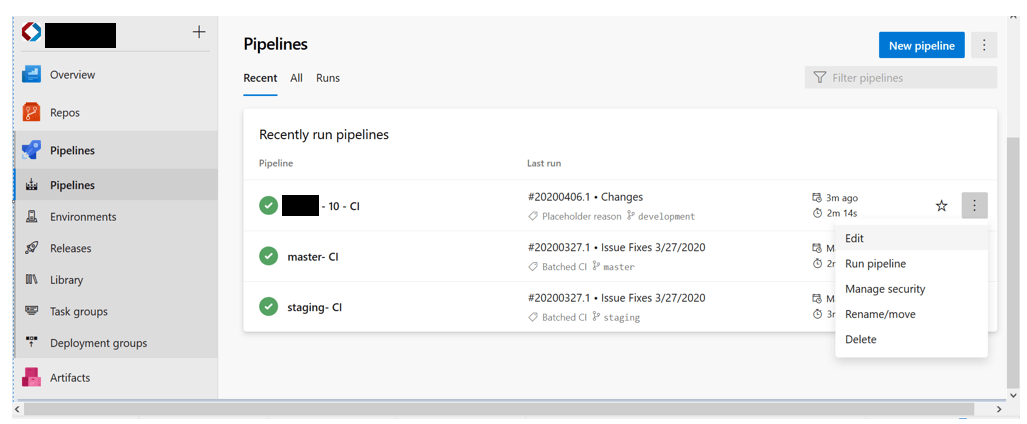
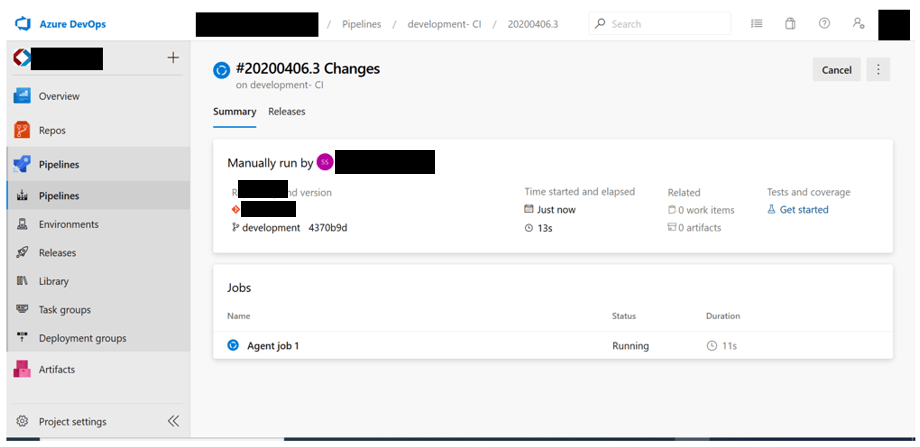
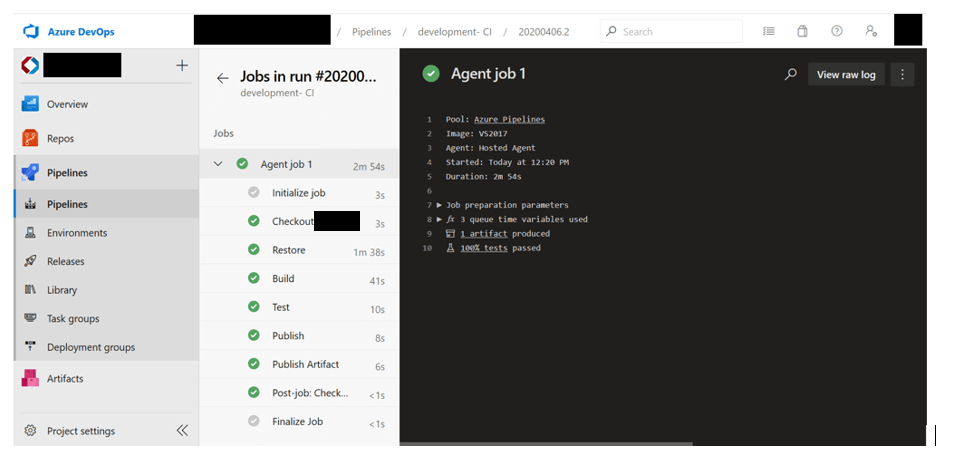
- After the completion of CI and CD, committed changes will be published to the server.
- We can check the CD status in Releases under the Pipelines.
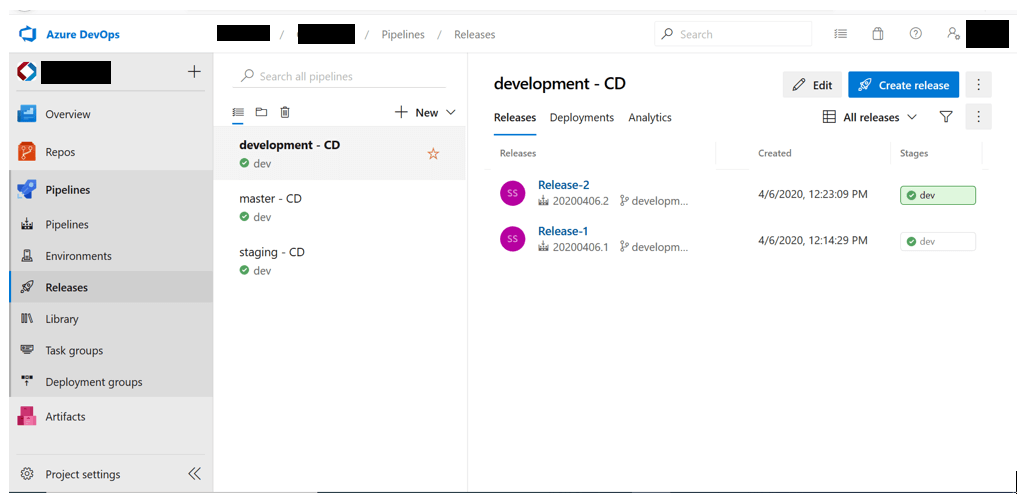
Advantages
- Implementing CI and CD pipelines help to ensure consistent and quality code that is readily available to the users.
- Azure Pipelines provides a speedy, easy, and safe way to automate constructing your projects and making them available to users.
- Azure Functions deployment slots allow your function app to run different instances called slots. Slots are different environments of the same app. One app instance is always mapped to the production slot, and you can swap instances allocated to a slot on demand.
Disadvantages
- Integration with non-Microsoft is arduous: Azure DevOps should provide simple integration with other product lines to improve acceptability.
- Azure Pipelines Workflow is constant (can’t set if-else or switch-case constructions). This makes it is more difficult to develop complex workflows.
Conclusion
I hope you now have a clear idea about how to integrate the CI and CD pipelines in the Azure portal.
Syncfusion has 1,600 components and frameworks for WinForms, WPF, ASP.NET (Web Forms, MVC, Core), UWP, Xamarin, Flutter, JavaScript, Angular, Blazor, Vue, and React. Use them to boost your application development speed.
If you are not yet a customer, you can try our 30-day free trial to explore our controls and features.
If you have any questions, please let us know in the comments section. You can also contact us through our support forum, Direct-Trac, or feedback portal. As always, we are happy to assist you!
